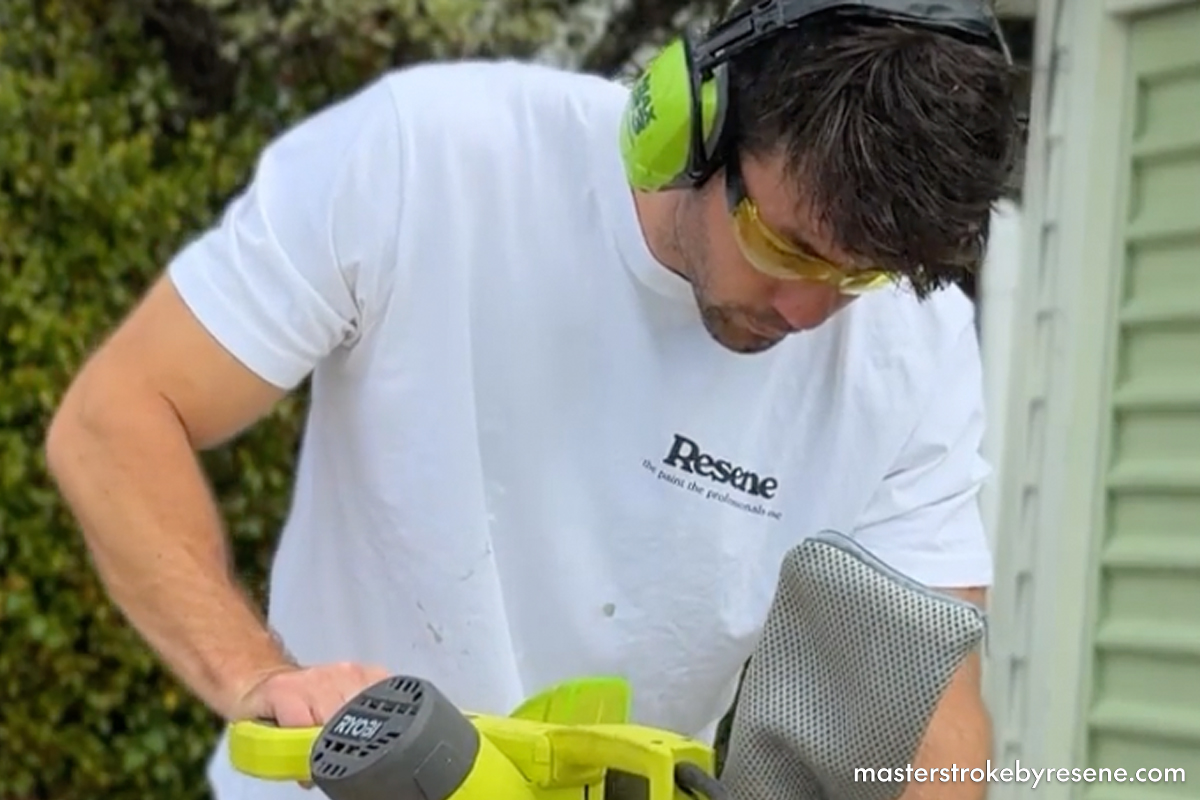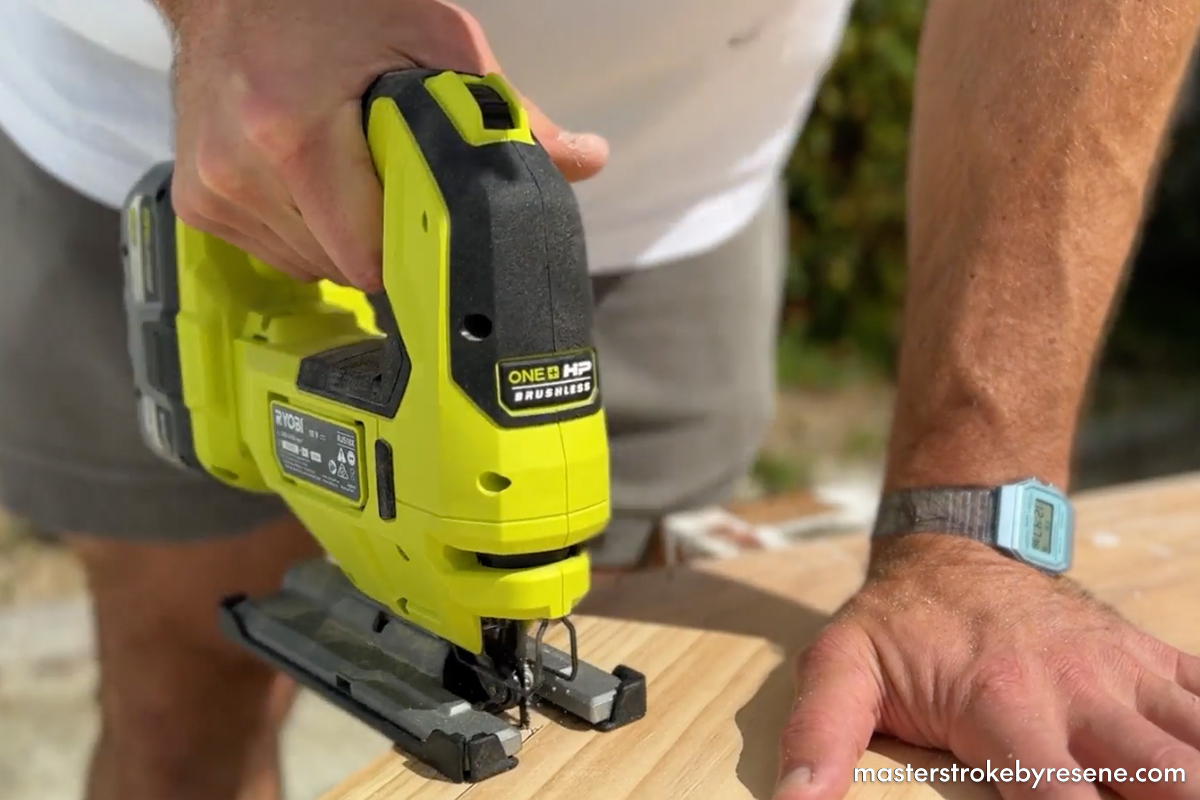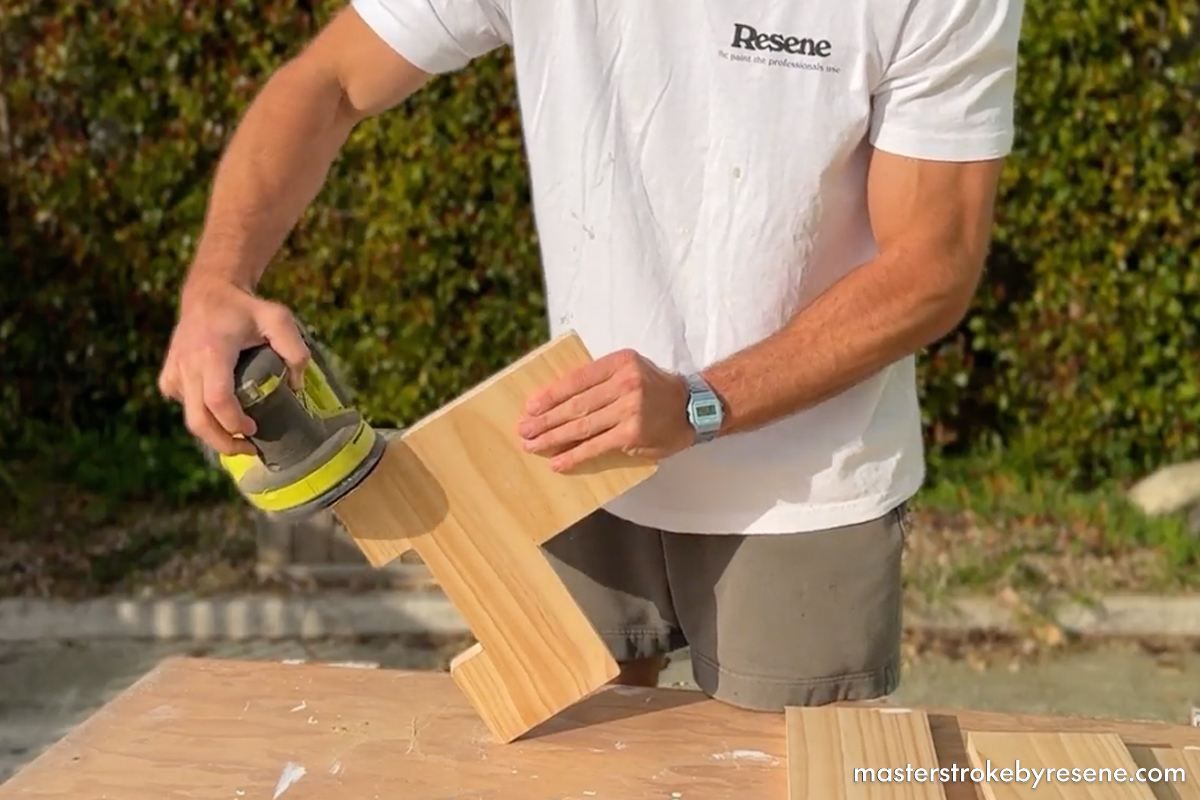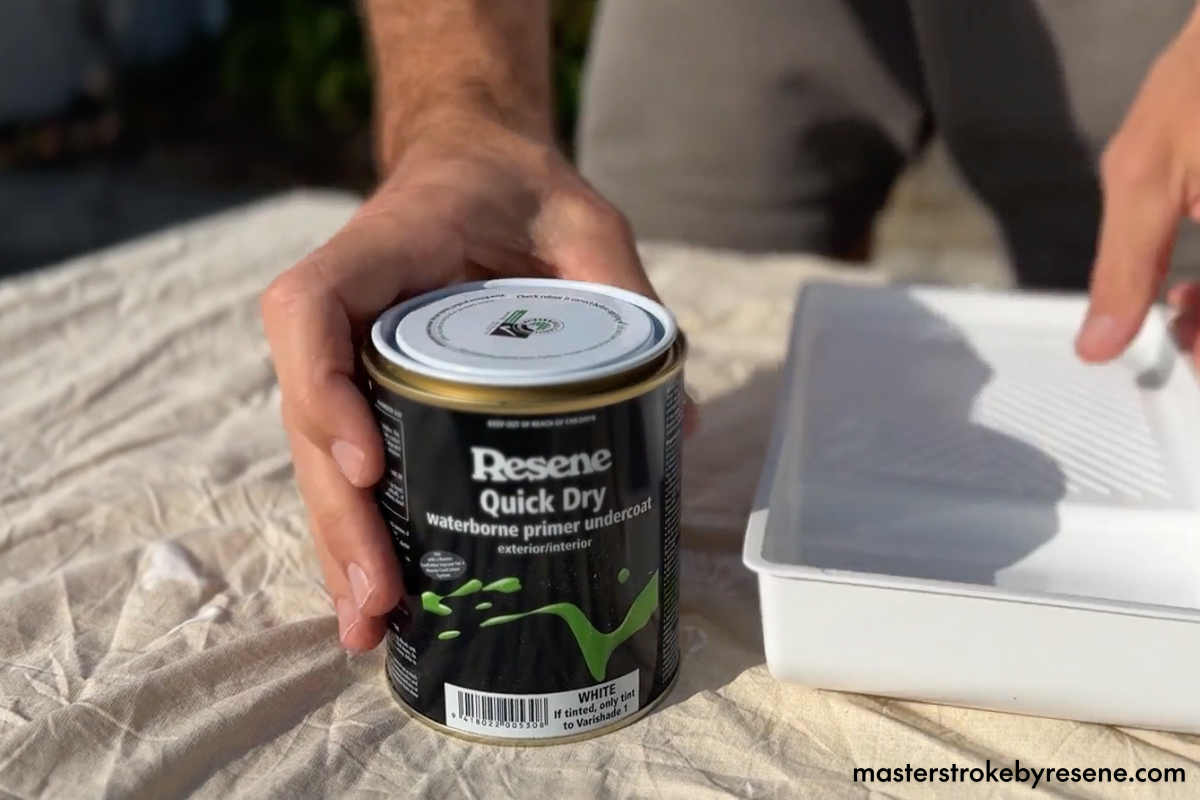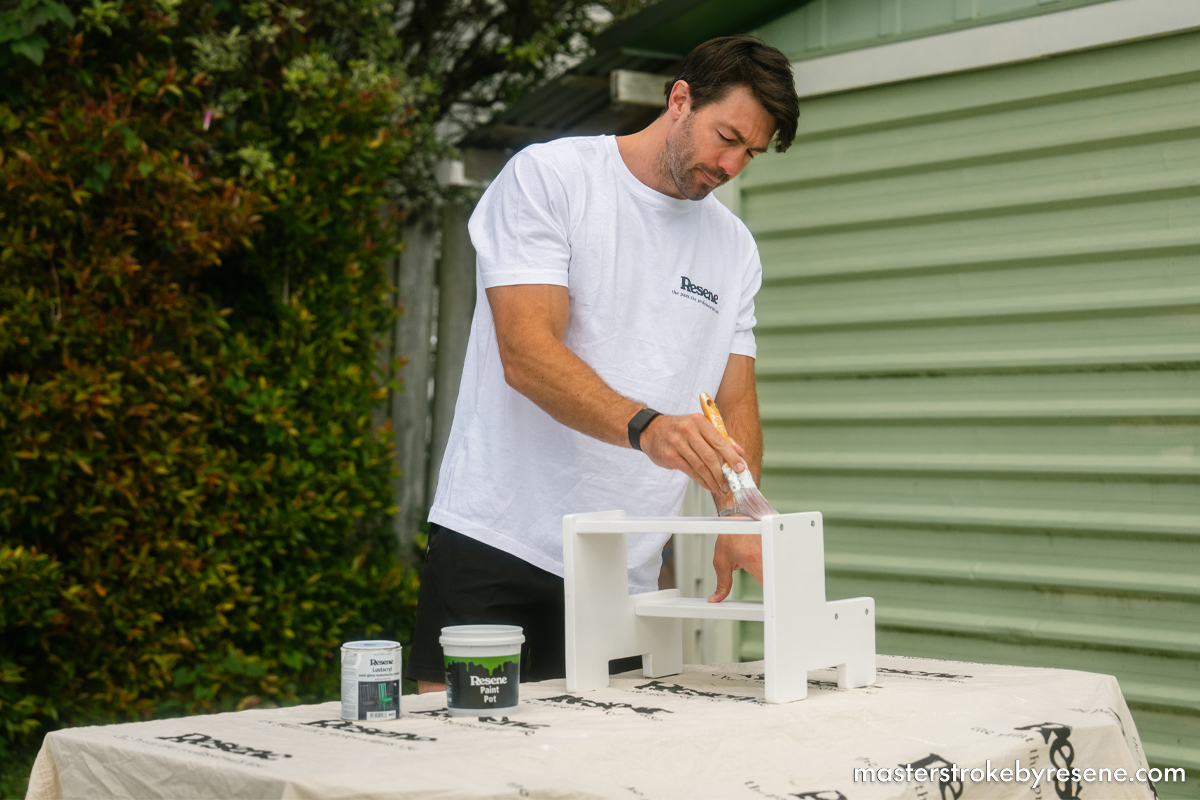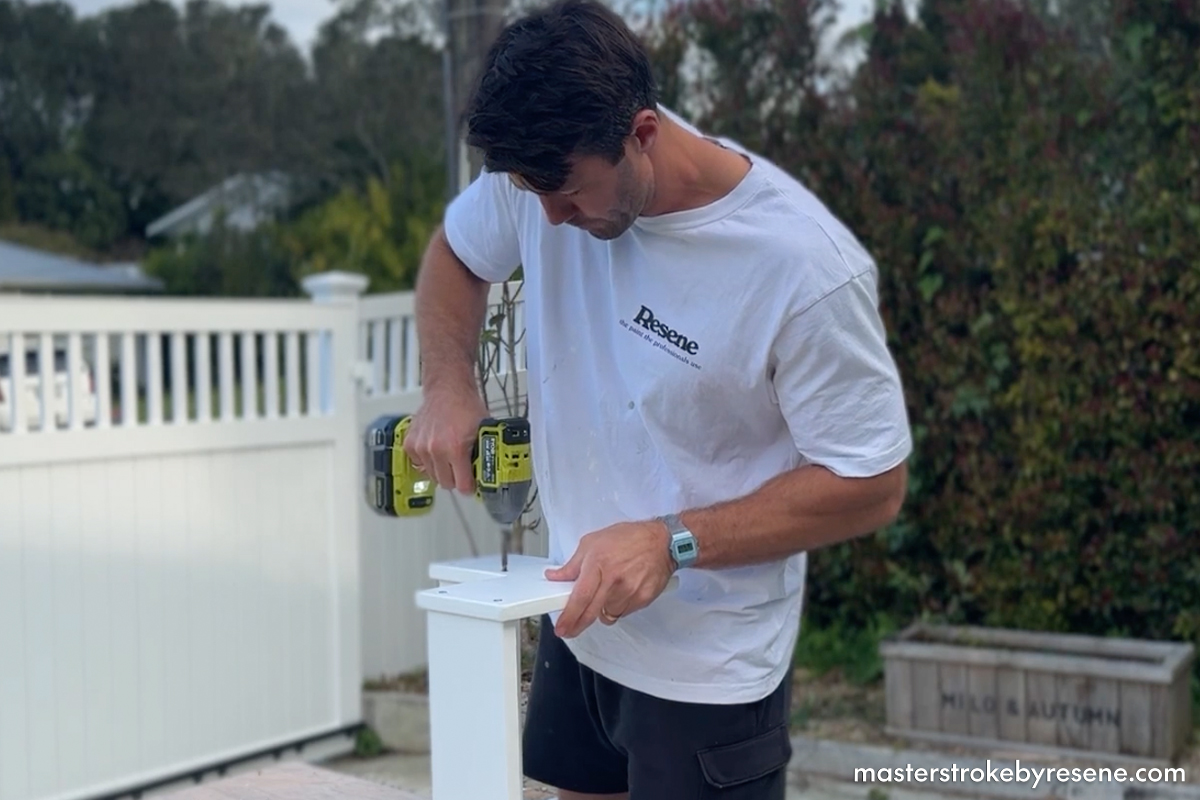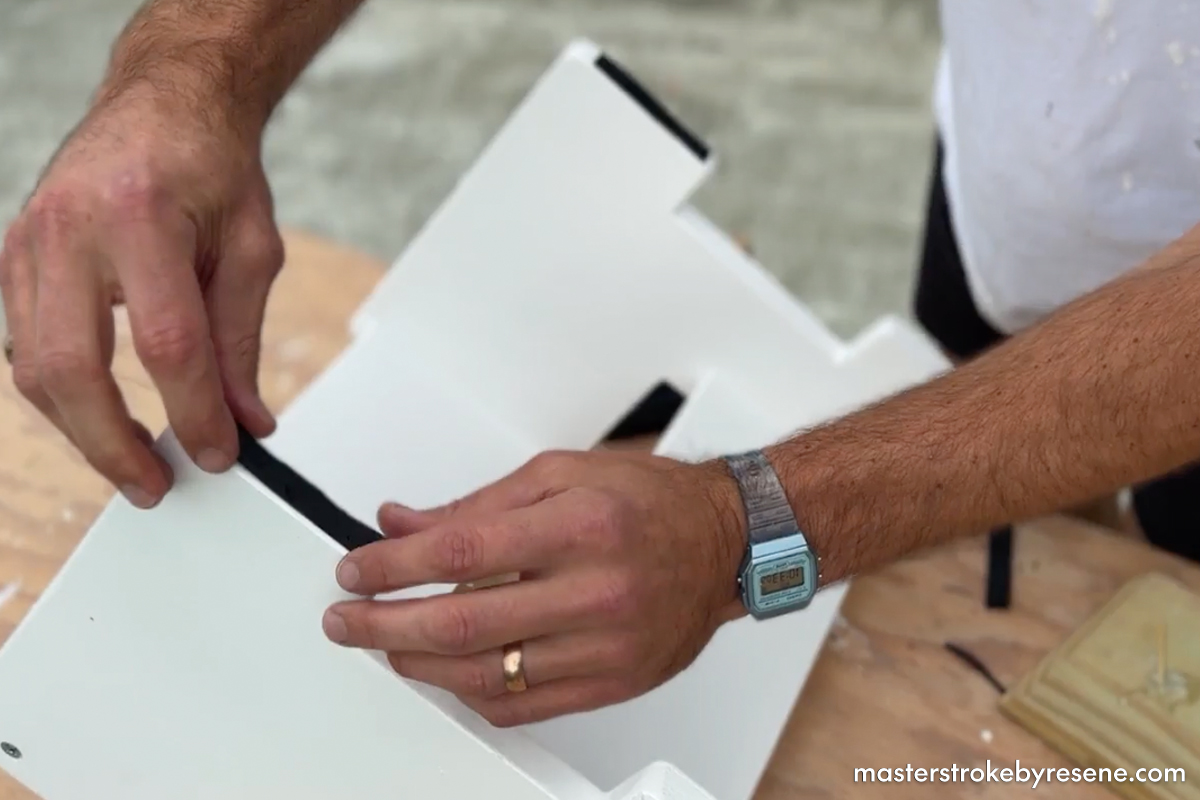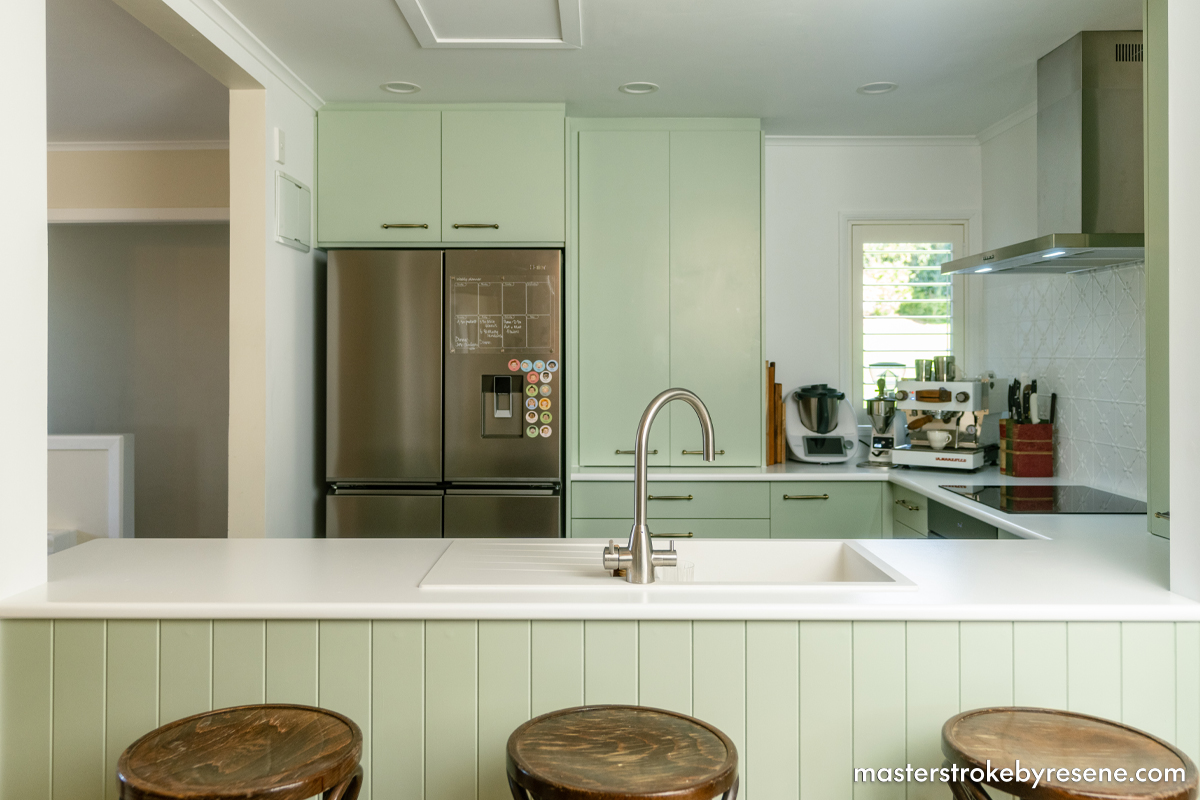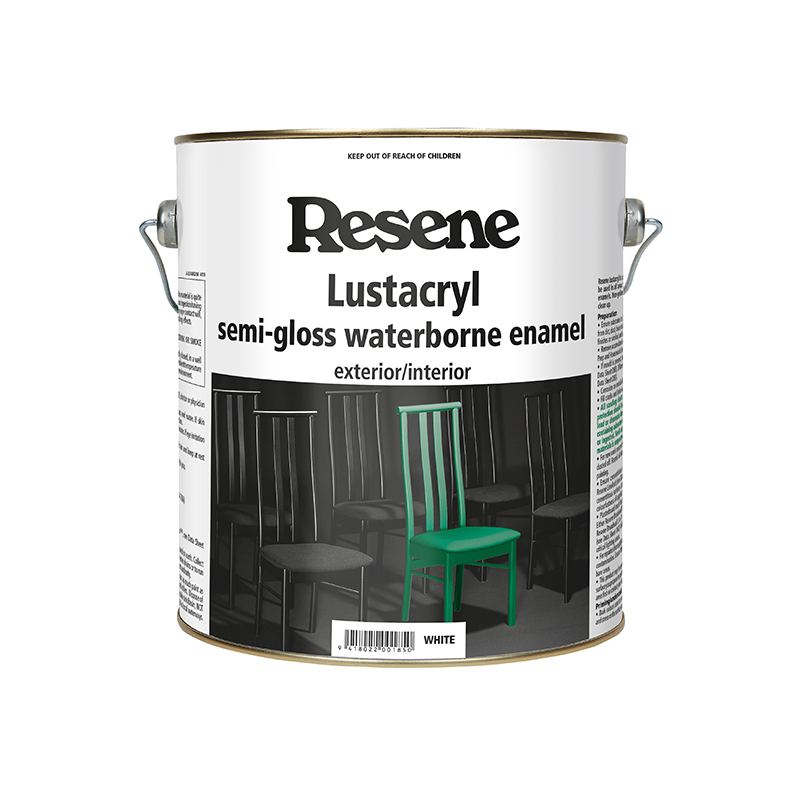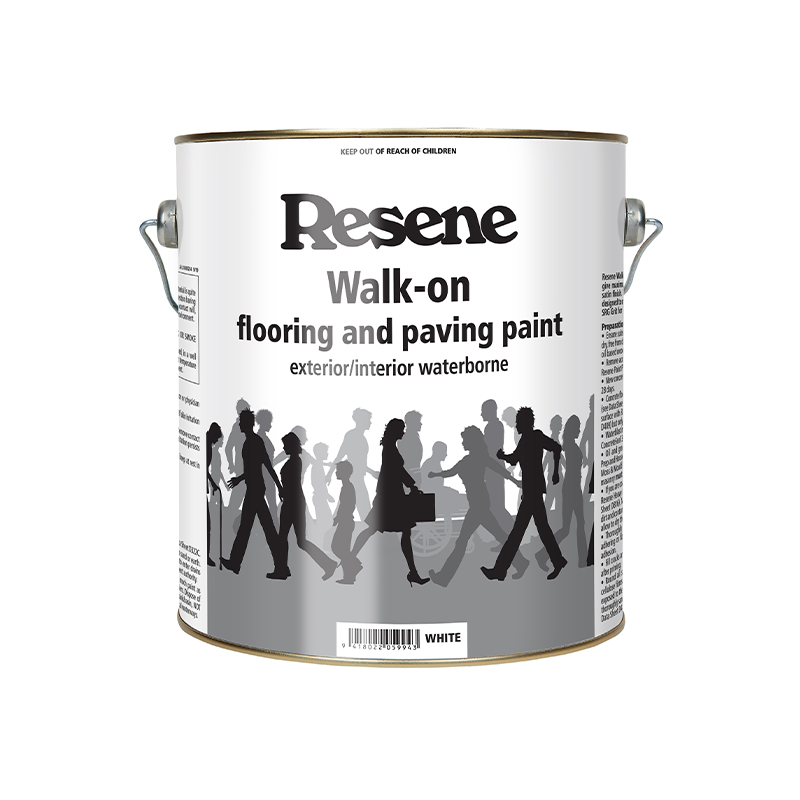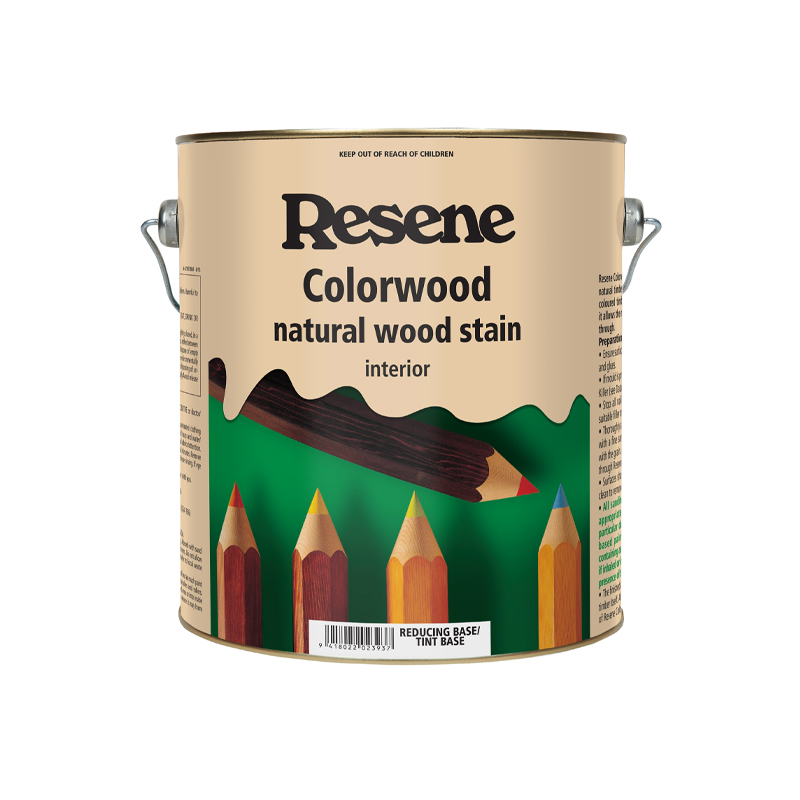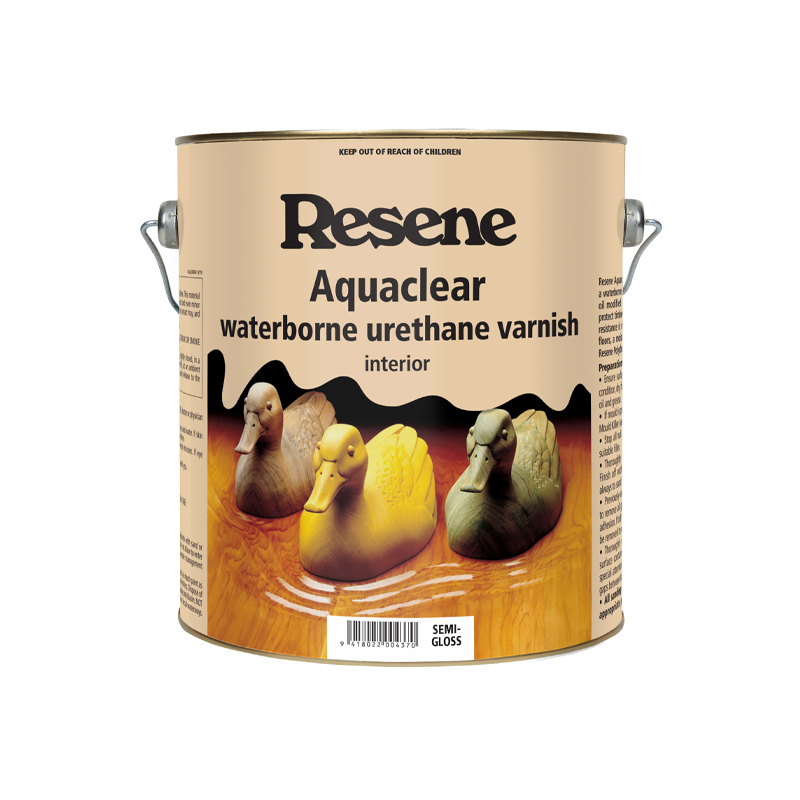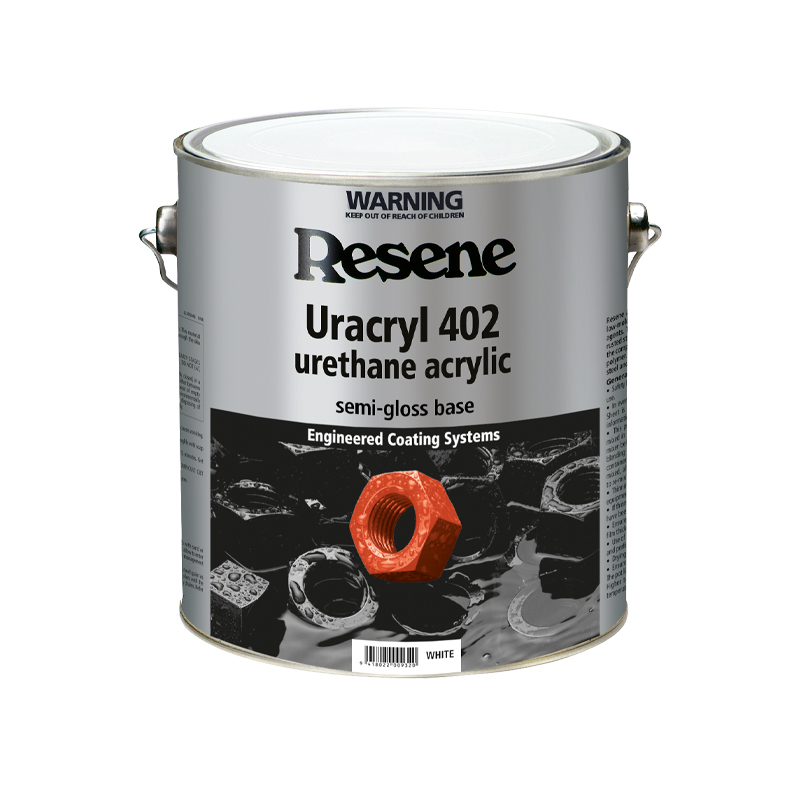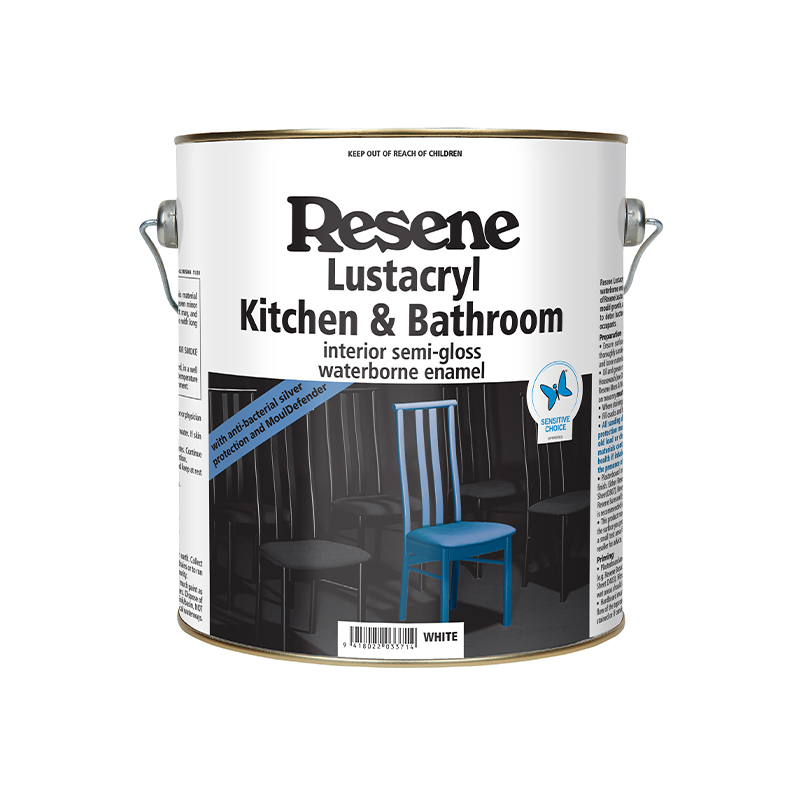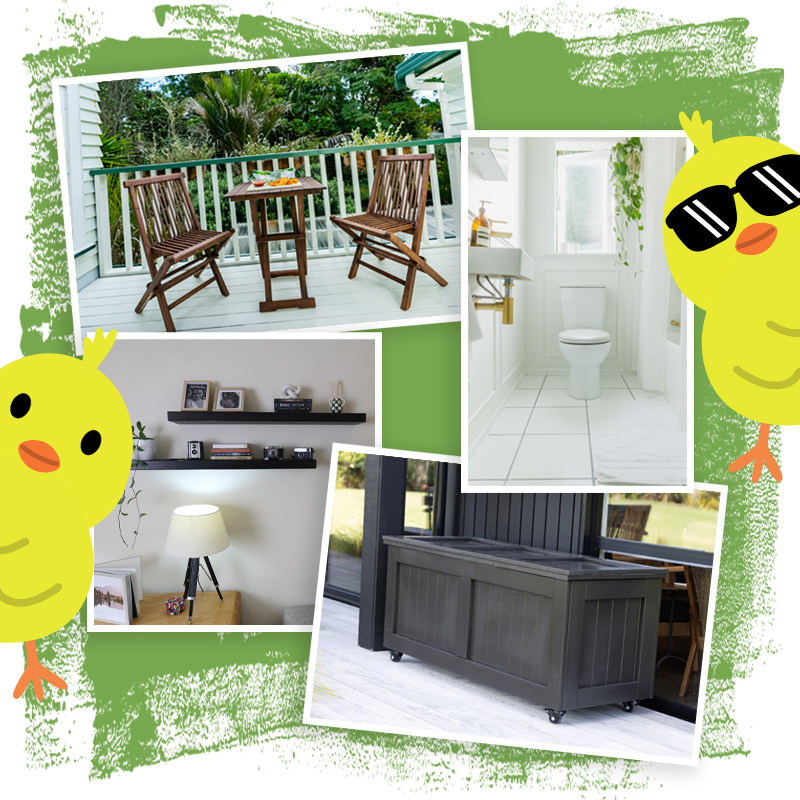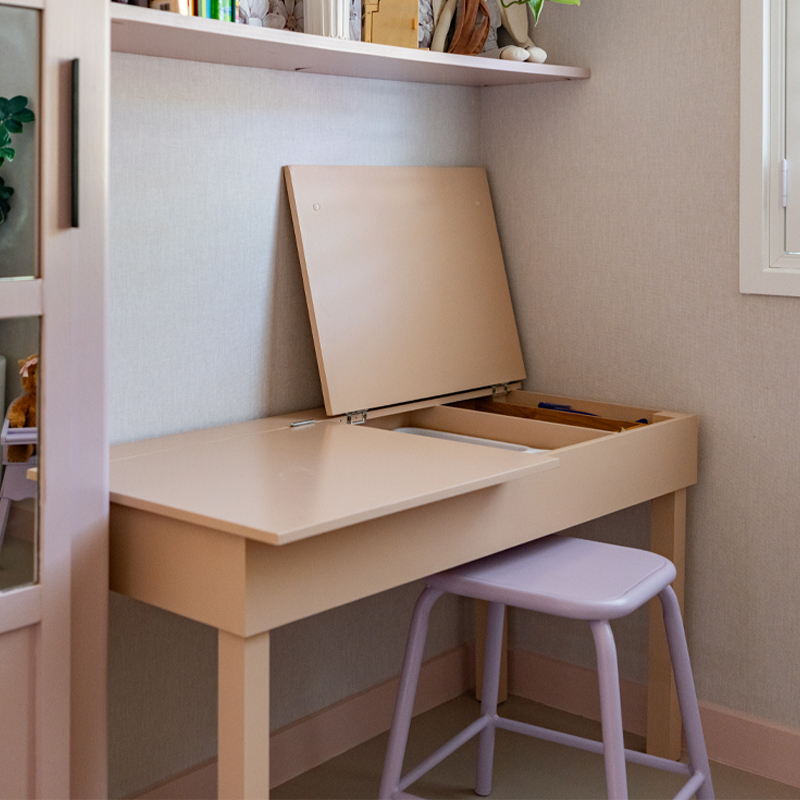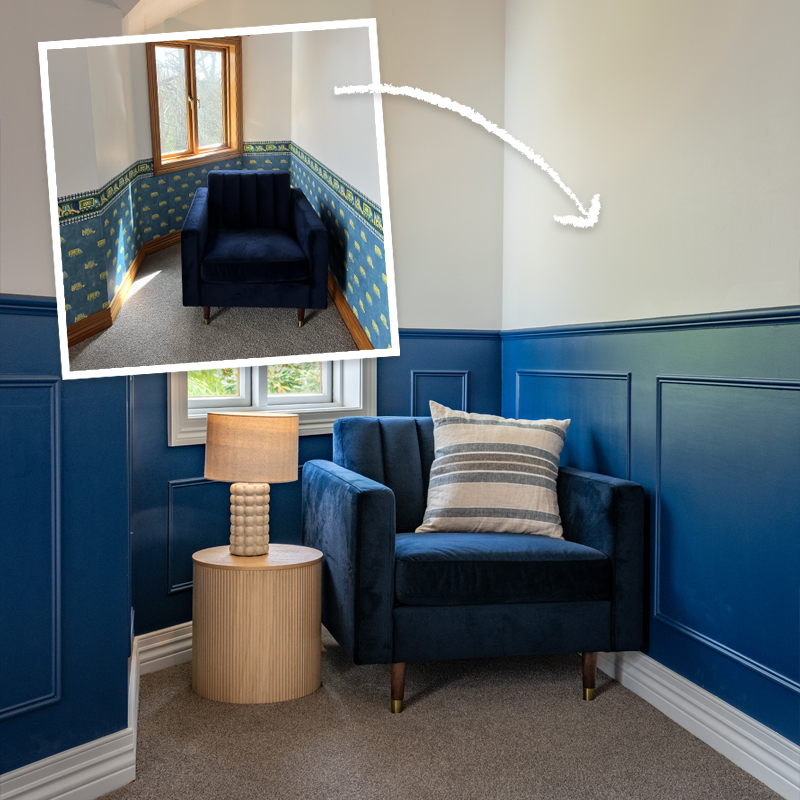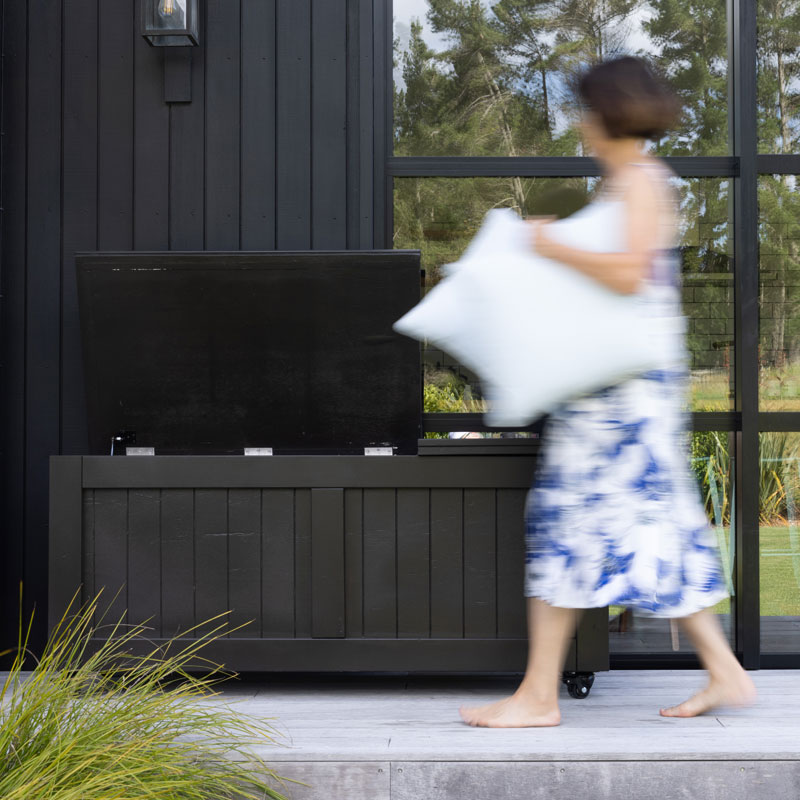While patience levels can sometimes be tested, having your children ‘help’ in the kitchen from an early age is a great way to instil a love of food and cooking. Art Green and wife Matilda have three kids, and two of them are now at the age when they want to get involved – but they’re not yet tall enough to reach the benchtop. Art has decided to remedy that by building a cool and practical step stool to allow them to reach up and help.
Art made this step from pine and gives it a modern, fresh-looking finish with a coating of Resene Lustacryl semi-gloss waterborne enamel in Resene Alabaster. Resene Lustacryl is the perfect option for paint here as it’s hard-wearing and durable and can be wiped down easily. He also adds rubber feet to the base of the step stool to make sure it doesn’t slide around on the kitchen floor.
Lending a hand in the kitchen is a brilliant way to not only encourage healthy eating and experimenting with new foods, it gives children a sense of independence and even helps develop fine motor skills. Experts say that kids as young as 18 months to two years old can participate, obviously with supervision. You can even get them involved with the making of this step stool by arming them with a small roller or paintbrush and letting them prime and paint each of the pieces.
As well as budding chefs, this step stool makes a great addition to the bathroom to help little ones get up to the basin to brush their teeth by themselves. Read on to find out how to make one for your own kids.
Top tip: If you want a grippier finish on your step stool, use a lower sheen Resene finish, such as Resene Walk-on. Lower sheen finishes tend to be less slippery, higher sheen finishes are easier to wipe clean. Or stain it in Resene Colorwood and protect with Resene Aquaclear if you want it to match stained wooden flooring.


